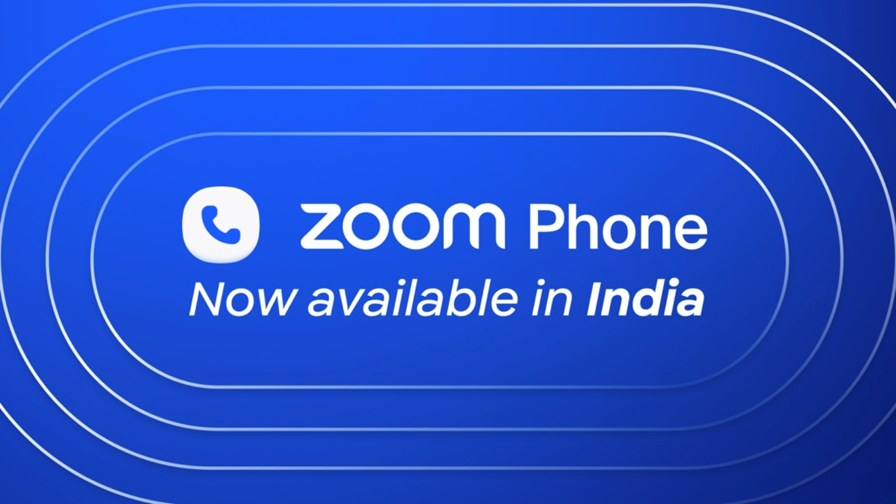
- Zoom was granted voice services licences by the Indian authorities in 2023
- Now it has deployed its systems and is offering voice services to the country’s enterprise sector
- It claims to be the first company to combine local phone numbers with a cloud-based PBX in India
Multimedia conferencing specialist Zoom is seeking to shake up the enterprise voice services sector in India with the launch of its cloud-enabled Zoom Phone service.
The California-based company was awarded three licences by India’s Department of Telecommunications (DoT) in 2023: Unified Licence with Access – All/PAN India; NLD – National Long Distance; and ILD – International Long Distance. These allowed it to offer cloud-based PBX (private branch exchange) in the country and, earlier this month, having rolled out its local infrastructure and ensured regulatory compliance, the company launched its Zoom Phone service.
Zoom claims it is the first company in India to combine a cloud PBX service with local phone numbers, a move that means its enterprise customers, and in turn their end users and partners, can be connected to or from the Zoom platform from mobile, fixed and broadband lines, offering enterprises a single platform for both voice/data communication and collaborative workflows.
The local number service is currently being rolled out in the Maharashtra telecom circle (service area), and will soon be extended to other circles, including Karnataka, Tamil Nadu, Andhra Pradesh, Mumbai, and Delhi, “covering all the major technology centres in India,” the company noted in its launch announcement.
Zoom Video Communications, to give the company its full name, experienced viral growth during the Covid-19 pandemic that began in 2020, when its desktop Zoom conferencing application was adopted by millions of organisations struggling to stay in touch with dispersed and home-working members of staff during lockdowns. Zoom’s boom-times ended as the pandemic faded: Its stock valuation declined from an over-exhuberant peak of $159bn in October 2020 to about $22bn currently, but despite that catastrophic drop it still has more than 190,000 enterprise customers currently, though that number has been in decline. In its most recent fiscal quarter, which ended 31 July 2024, the company generated revenues of $1.16bn, more than half of which were generated from enterprise customers, and reported an operating income of $202.4m, so it is still a very profitable company.
Zoom developed a broad range of unified comms features, including video, audio, chat and screen-sharing, to fashion a comprehensive communications and collaboration platform and subsequently did a good job of transitioning its business from its hyper-growth pandemic phase to life in the digital service provider (DSP) middle lane, where it found visual corporate communications were receiving another boost due to a post-pandemic surge in home working.
For India, Zoom claims the voice option therefore provides a seamless integration with the rest of the Zoom Workplace for phone-based Zoom users and, importantly going forward, with its recently introduced Zoom AI Companion, a generative AI (GenAI) assistant designed to help users summarise meetings, create action items, and draft emails and chat messages based on the context being discussed in Zoom Workplace.
Zoom further claims it can: Generate content for whiteboards and events; translate and transcribe; and offer call summaries. As is increasingly common, it uses a “federated” approach, leveraging AI models from Zoom, OpenAI, Anthropic and Meta.
India’s voice sector is still currently dominated by the regular PSTN (public switched telephone network) services provided by the mobile service providers, but Zoom’s local number provisioning, voice service capabilities and existing voice user base may give it an advantage as it seeks to attract enterprise users in competition with the likes of Microsoft (Teams).
“The availability of Zoom Phone is timely, reflecting the trend of strong demand for unified communications-as-a-service [UCaaS] solutions integrated with telephony in India,” noted Krishna Baidya, senior industry director at analyst house Frost & Sullivan. “By offering a single platform with enterprise-class features, Zoom Phone addresses the growing modern collaboration needs of local companies and global businesses with presence in India as they look to unify their employee and customer communication channels with a solid foundation in voice. In addition to streamlining communications with one platform, Zoom Phone stands out with its scalability, security and user-friendly interface,” he added.
This, of course, pits Zoom against the likes of Reliance Jio, Bharti Airtel and Vodafone Idea, India’s mobile services giants, but Zoom does also partner with telcos and aggregators to distribute Zoom Phone, and claims it has many telco partners, including Deutsche Telekom, a collaboration that resulted in Zoom X powered by Telekom for the German market.
– Ian Scales, Contributing Editor, TelecomTV
Email Newsletters
Sign up to receive TelecomTV's top news and videos, plus exclusive subscriber-only content direct to your inbox.




